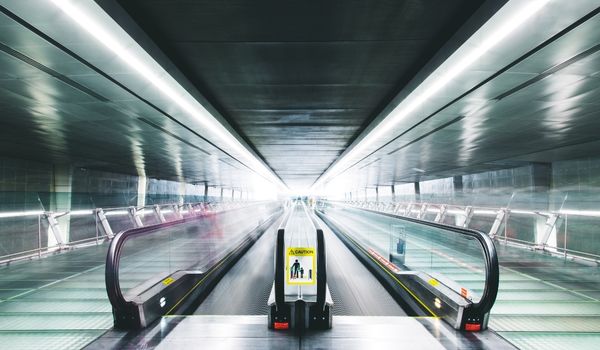Airport security is of utmost importance, not only to keep passengers and staff safe but also to prevent illegal activities such as drug trafficking. Drug trafficking is a major problem faced by many countries and airport scanners play a critical role in detecting drugs. In this blog post, we will explore the science behind airport scanners and how they are able to detect drugs. From X-Ray scanners to millimeter wave scanners, we will take a deep dive into the different types of airport scanners and their drug-detection capabilities. This comprehensive guide will give you a better understanding of the technology used in airport scanners and the challenges faced in detecting drugs.
Types of Airport Scanners
Airport scanners come in various forms and each type uses different technology to detect drugs. X-Ray scanners, millimeter wave scanners, and backscattered X-Ray scanners are the three most commonly used types of airport scanners. X-Ray scanners use X-Ray technology to produce images of the contents of luggage and other items. The X-Rays pass through the objects and are captured on the other side, producing an image that reveals the contents of the objects. Millimeter wave scanners, on the other hand, use high-frequency electromagnetic waves to produce images of the contents of objects. The waves bounce off the objects and are captured by the scanner, producing an image of the contents. Backscattered X-Ray scanners are similar to X-Ray scanners in that they also use X-Ray technology, but instead of passing through the objects, the X-Rays bounce off the objects, producing an image of the contents.
Each type of scanner has its own advantages and disadvantages. For example, X-Ray scanners are cheap, widely available, and can produce detailed images, but they have limitations in detecting certain types of drugs. Millimeter wave scanners, on the other hand, are more expensive but are able to detect a wider range of drugs. Backscattered X-Ray scanners offer a good balance between cost and drug detection capabilities, but they are not as widely available as X-Ray scanners.
In choosing the right type of scanner, airports must consider several factors such as cost, availability, drug detection capabilities, and privacy concerns. The best type of scanner for an airport will depend on its specific needs and the resources available to it. Regardless of the type of scanner used, the goal is always the same: to detect drugs and prevent them from entering the country.
How X-Ray Scanners Detect Drugs

X-Ray scanners work by producing images of the contents of objects, including luggage, backpacks, and other items. When an object is placed in the scanner, X-Rays are directed at the object and pass through it. The X-Rays are then captured on the other side of the object, producing an image of the contents of the object. This technology is commonly used in hospitals for medical imaging, as well as in airport security to detect drugs and other contraband.
X-Ray scanners use a simple principle called attenuation. The X-Rays pass through objects, such as luggage, and are partially absorbed by the contents of the object. Different materials absorb different amounts of X-Rays, so the image produced by the scanner will reveal the contents of the object. For example, drugs such as cocaine and heroin are denser than other materials and will appear as dark, opaque areas on the X-Ray image.
While X-Ray scanners are effective in detecting drugs, they have limitations. For example, certain types of drugs may not be detected if they are hidden inside other materials, such as clothing, that are not as dense as the drugs themselves. Additionally, X-Ray scanners may not be able to detect drugs that are well-hidden within other objects, such as false bottoms in suitcases. In these cases, additional screening measures may be necessary, such as manual searches or the use of sniffer dogs.
Despite these limitations, X-Ray scanners are still widely used in airport security due to their cost-effectiveness and ease of use. The images produced by X-Ray scanners are quick to produce and can be easily interpreted by airport security personnel. Additionally, the technology is widely available, making it a popular choice for many airports.
How Millimeter Wave Scanners Detect Drugs
Millimeter wave scanners use high-frequency electromagnetic waves to produce images of the contents of objects. The waves are directed at the object and bounce off the contents, producing an image of the contents. This technology is different from X-Ray technology in that it does not pass through objects and does not produce ionizing radiation. This makes millimeter wave scanners safer for use in airport security, as they do not pose a risk to the health of passengers or staff.
Millimeter wave scanners work by capturing the electromagnetic waves that bounce off the contents of objects. The waves are then processed by the scanner to produce an image of the contents. The images produced by millimeter wave scanners are similar to X-Ray images, but they are more detailed and can reveal hidden objects and substances.
One of the key advantages of millimeter wave scanners is that they are able to detect a wider range of drugs than X-Ray scanners. For example, they are able to detect drugs that are well-hidden within other objects, such as false bottoms in suitcases. Additionally, millimeter wave scanners are able to detect drugs that are not visible on X-Ray images, such as certain types of plastic-wrapped drugs.
Despite their advantages, millimeter wave scanners are more expensive than X-Ray scanners and are not as widely available. Additionally, some passengers may object to the technology due to privacy concerns, as the images produced by millimeter wave scanners can be quite revealing.
Advanced Technology Used in Drug Detection
In recent years, there have been significant advancements in the technology used for detecting drugs at airports. One such technology is terahertz imaging, which uses high-frequency electromagnetic waves to produce images of the contents of objects. This technology has been found to be effective in detecting drugs that are not visible on X-Ray or millimeter wave images.
Another advanced technology used in drug detection is trace detection, which involves the analysis of samples taken from objects or individuals to detect the presence of drugs or other illegal substances. Trace detection technology has come a long way in recent years, making it possible to detect extremely small amounts of drugs that would not be visible on X-Ray or millimeter wave images.
Advanced imaging systems, such as computed tomography (CT) scanners, are also being used in some airports to detect drugs. CT scanners use X-Rays to produce detailed images of the contents of objects, making it easier to detect drugs that are well-hidden. CT scanners are also able to produce three-dimensional images, which can be particularly useful in detecting drugs that are hidden within other objects.
Finally, artificial intelligence and machine learning algorithms are increasingly being used in airport security to detect drugs. These technologies can analyze vast amounts of data in real time, making it easier to identify patterns and detect drugs that would otherwise go unnoticed. Additionally, machine learning algorithms can continuously learn and adapt to new situations, making them more effective over time.
Challenges in Detecting Drugs using Airport Scanners
Despite the advances in technology, there are still significant challenges in detecting drugs using airport scanners. One of the biggest challenges is the increasing sophistication of drug traffickers, who are finding new ways to conceal drugs within objects. This makes it more difficult for airport scanners to detect drugs and for security personnel to identify suspicious objects.
Another challenge is the limited capability of current technology. For example, X-Ray scanners are not able to detect certain types of drugs, such as certain types of plastic-wrapped drugs. Additionally, X-Ray and millimeter wave scanners may not be able to detect drugs that are well-hidden within other objects, such as false bottoms in suitcases.
Finally, there are privacy concerns associated with the use of airport scanners, as the images produced by these scanners can be quite revealing. Some passengers may object to being subjected to such imaging, making it more difficult for airport security personnel to effectively detect drugs.
Training and Certification of Airport Scanner Operators
To ensure the effective detection of drugs at airports, it is essential that airport scanner operators receive proper training and certification. This includes training on the use of airport scanners, as well as on the detection of drugs and other illegal substances.
Operators must be trained to use airport scanners effectively and to interpret the images produced by the scanners. They must also be trained to identify suspicious objects and to take appropriate action when such objects are detected.
Certification is typically provided by the manufacturer of the airport scanner, and it is important for airport security personnel to be certified in the use of the specific type of scanner they will be operating. This ensures that they have the necessary knowledge and skills to effectively use the scanner and to detect drugs and other illegal substances.
In addition to training and certification, airport scanner operators must also undergo regular retraining to keep up-to-date with the latest technology and best practices in drug detection. This helps to ensure that they remain effective in their roles and that the airport remains secure.
Conclusion
Airport scanners play a critical role in detecting drugs and preventing them from entering the country. From X-Ray scanners to millimeter wave scanners, the technology used in airport scanners has come a long way in recent years, making it easier and more effective to detect drugs. Despite the advances in technology, however, the challenges faced in detecting drugs remain. Drugs can be well-hidden and may not be visible on X-Ray or millimeter wave images. Additionally, certain types of drugs may not be detected by X-Ray or millimeter wave scanners.
Despite these challenges, airport security personnel are constantly working to improve their methods for detecting drugs. Whether it’s through the use of X-Ray or millimeter wave scanners, or other means such as manual searches or sniffer dogs, the goal is always the same: to keep passengers and staff safe and prevent illegal activities such as drug trafficking. By understanding the science behind airport scanners, we can appreciate the efforts made to ensure the safety and security of air travel.
